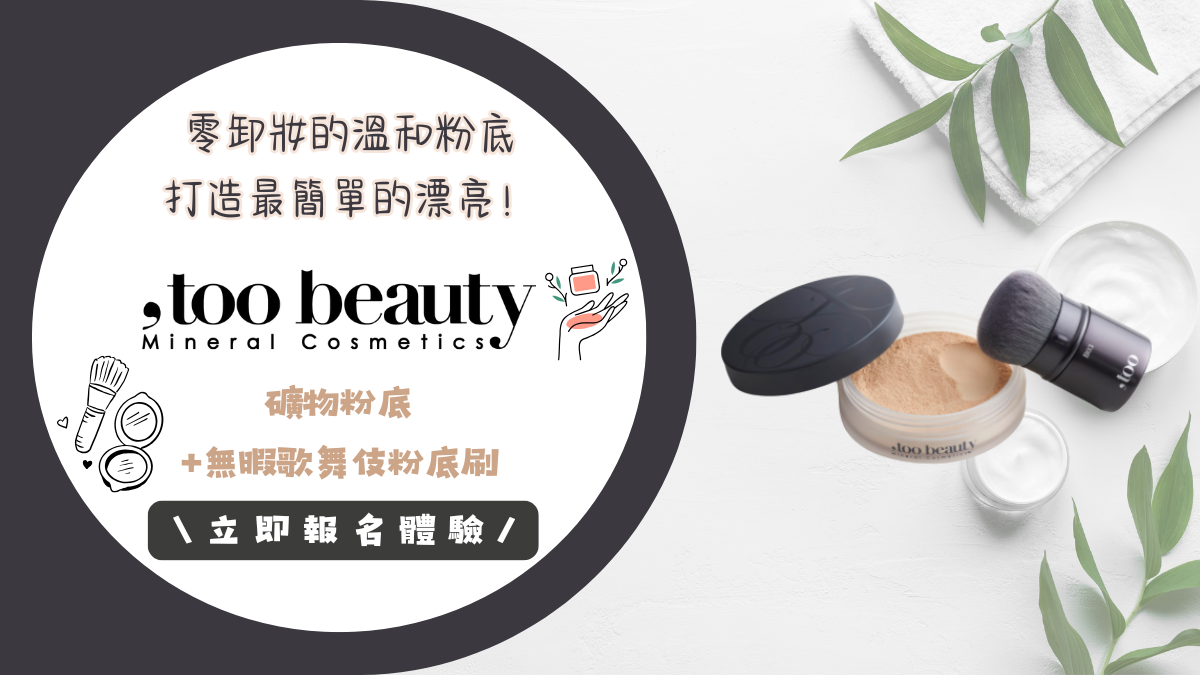德國洋甘菊(German chamomile,Matricaria chamomilla)
菊科(Asteraceae)母菊屬(Matricaria)
學名:Matricaria chamomilla/ Matricaria recutita
別名:camomile

圖:Matricaria chamomilla[1]
全歐洲皆可見得,澳洲、北美和亞洲溫帶區也有生長[2]。“chamomile”來自希臘語的“地上蘋果”,因散發的蘋果香;古埃及人用它緩解發燒或中暑,所以被認為是太陽神賜予的禮物。
相較於羅馬洋甘菊,德國洋甘菊顯得普遍且功效的相關研究多元,被歐洲人稱作治療神藥,德國人更覺得它無所不能。德國洋甘菊能抗發炎、創傷癒合、除臭、抑菌、消炎、鎮靜、驅風、消毒、解痙;羅馬洋甘菊可驅風、止吐、解痙和鎮靜。[2-3]
【生理活性】
德甘花的精油產率約0.4-2.0%,主要成分有α-沒藥醇(α-bisabolol)和其氧化物,還有甘菊藍(azulene),包含母菊天藍烴(chamazulene,1-15%)。藍色的母菊天藍烴是在高溫和/或酸性環境下,由存在於新鮮頭狀花序無色的母菊素(matricin)反應形成,使用超臨界二氧化碳流體萃取可減少母菊天藍烴產生,因低溫。其他精油成分也包括金合歡烯(farnesene,12–28%)、匙葉桉油烯醇(spathulenol)和螺環醚類(spiroethers),例如:cis/trans-en-yn-dicycloethers (8–20%)。德甘沖泡茶可釋放花朵精油10-15%。
德甘花沖泡茶也富含多種熱水溶性的類黃酮和多酚物質。類黃酮例如:芹菜素(apigenin)、斛皮素(quercetin)、萬壽菊素(patuletin)、木犀草素(luteolin)和其醣苷衍生物;多酚有阿魏酸、咖啡因酸;以及0.1%香豆素類的7-甲氧香豆素(herniarin)和7-羥基香豆素(umbelliferone)。[4]
民俗療法
收錄在26國藥典,以茶或通寧水攝取,治焦慮、歇斯底里、夢魘、失眠或其他睡眠問題,也治痙攣、震顫性譫妄(delirium tremens)。精油治瘧疾、寄生蟲感染、膀胱炎和流感。16世紀當時的人們,用於治療失眠、神經痛、風濕、消化不良、脹氣、頭痛、痛風和皮膚疾病。[3]
德國專門回顧、審查、編撰民間草藥的官方委員會—German E Commission [4],批准德甘可內服治消化道發炎和腸躁症;外用可治皮膚、黏膜和肛門生殖器區的發炎,以及細菌性皮膚病(包含口腔、牙齦)和呼吸道發炎。
抗痙攣
酒萃物能抑制乙醯膽鹼和組織胺誘發引起的痙攣;精油減少豚鼠迴腸痙攣的功效,可和治療藥—罌粟鹼(papaverine)匹敵;活性成分—芹菜素和沒藥醇在抗痙攣效果上亦呈劑量關係。[3、5]
鎮靜、紓壓
促腎上腺皮質激素(adrenocorticotropic hormone,ACTH)是生物處於壓力時,會分泌增加的荷爾蒙。吸聞德甘精油的大鼠能降低血液中因壓力上升的ACTH濃度,當精油和藥物—diazepam輔助治療,可比單獨使用diazepam時降低更多。[3、6]
增進子宮張力
子宮乏力易導致產後大出血。德甘水萃物可促進豚鼠和白兔的子宮張力。[3]
抗發炎
沒藥醇可退熱因酵母菌誘使發燒的大鼠;芹菜素可減少大鼠因卡拉膠誘發的腫脹,以及小鼠的延遲性過敏反應,表現潛在的抗發炎功效。[3、7-8]
治濕疹
161位在手部、前臂或下肢患有濕疹且預先經過0.1% difluocortolone治療的患者[9],分4組分別使用德甘乳膏、0.25% 乙酸皮質醇(hydrocortisone)、0.75% 氟可丁酯(fluocortin butyl ester,一種醣化皮質類固醇)或5% 丁苯羥酸(bufexamac,一種非類固醇消炎藥),經過3-4周的治療期,德甘乳膏的治療效果最顯著。
改善嬰兒哭鬧(infantile colic)
68位有哭鬧情況的健康嬰兒(2-8週)隨機分組,父母持續1週在嬰兒哭鬧時給予150ml由德甘、馬鞭草(Verbena Officinalis)、光果甘草(Glycyrrhiza glabra)、茴香
(Foeniculum vulgare)和檸檬香蜂草(Melissa officinalis)各萃取物製成的香草茶,但1日給予次數不超過3次,結果33位喝茶組有19位根除哭鬧,35位安慰劑組僅有9位[10]。
Savino的研究敘明了香草的使用劑量[11],每日給予由德甘(71.1 mg/kg/day)、茴香(65.7 mg/kg/day)和檸檬香蜂草(38.8 mg/kg/day)沖泡的香草茶為期一週,在第4天即能明顯改善嬰兒哭鬧,且沒有副作用。
以芝麻油調合的德甘精油5滴塗抹在嬰兒腹部並施以按摩[12],每日3次持續14天,結果能有效減少哭泣天數和時間,並延長睡眠時間。
緩解腹瀉
79位介於0.5-5.5歲的幼童參與試驗[13],在急性腹瀉時口服德甘萃取物和蘋果果膠組合物連續3天,及早擺脫腹瀉的幼童比率(85%)多於安慰組(58%),減少腹瀉的時間也相差5.2小時以上。
改善癌症治療後口腔炎
98位頭頸癌患者經歷化療或放射線治療後藉助德甘漱口水預防或治療口腔炎的研究結果[14]。在放射線治療後口腔炎的預防功效,20位患者有6位發展成輕度口腔炎,13位中度,1位重度;化療後的預防表現,46位僅10位有明顯的口腔炎產生。32位(16位放射線治療、16位化療)參與治療口腔炎的患者,使用德甘漱口水期間即能馬上察覺口腔不適感明顯被緩解,1周內幾乎所有患者便沒有易見的病徵。
減緩放射線治療後皮膚不適
50位罹患乳癌接受放射線治療的女性[15],每天擦德甘乳膏2次,1次在治療前30分鐘,1次臨睡前,結果和使用甜杏仁油的安慰組沒有顯著差別,2組的重度皮膚反應皆<10%。不過使用德甘的患者,皮膚出現不適的頻率較少,也較晚發病。
傷口癒合
14位以磨皮除刺青尚處於傷口癒合期的受試者,使用含德甘萃取物的敷料可顯著減少傷口面積以及加速結痂時間[16]。5位存有長期傷口的患者,藉由葡萄籽油調合德甘和薰衣草精油的治療,復原效果優於傳統治療
[17]。可是德甘萃取物噴劑對術後的咽喉炎和沙啞無效[18],161位患者中80位在插管麻醉前給予111mg德甘噴劑,42位未發生咽喉炎,與41位給予鹽水且無咽喉炎的安慰劑組沒有明顯差異。
可能風險
12位有心臟疾病的病患飲用2杯德甘茶(2茶包/6盎司水)後30分鐘的平均肱動脈壓有微小但明顯的增加(91 to 98 mmHg) [19],雖然12位中有10位在喝完10分鐘內即陷入沉睡,但心臟機能未有明顯變化。曾發生過敏、接觸性皮膚炎或接觸性蕁麻疹,經口攝取或外用塗抹皆有機會;德甘中的香豆素成分可能延長凝血時間;由於其鎮靜功效,和其他鎮靜藥併用時或許會增益藥效[4、20]。
【芳療功效】
8位患有接觸性濕疹卻對一般治療無感的幼童(3-7歲)使用含德甘按摩油按摩[4],可改善平時搔癢和睡眠品質,不過僅接受按摩也可得類似效果。77位居住於伊朗伊斯法罕(Isfahan)照護之家的年長者[21],實驗組每日2次在午飯和晚飯後口服含400mg德甘萃取物的膠囊持續4周,結果顯示可明顯改善睡眠品質。
1990-1998年間觀察8058位分娩婦女吸聞德甘精油或調合油按摩皮膚,有助於分娩時減少疼痛[22]。處於下肢骨折術後痛楚的病患,在連續3天每日3次攝取150ml熱水沖泡1g德甘或檸檬香蜂草的香草茶後,可明顯降低疼痛並提升滿足感[23]。
22位受試者吸聞德甘精油後再看負面圖像時,較能維持正向思考,減少負面思維[24]。152位準備照胃鏡的受試者,實驗組在吸嗅德甘精油持續20分鐘過後10分鐘,以焦慮量表自評焦慮程度,實驗組的焦慮降低程度達到顯著標準[25]。
參考資料:
(1)Chauhan, E. S., & Jaya, A. (2017). Chamomile an Ancient Aromatic Plant-A Review. Journal of Ayurveda Medical Sciences, 2(4).
(2)Hameed, I. H., Mohammed, G. J., & Kamal, S. A. (2018). A review: Uses and Pharmacological activity of Matricaria chamomilla. Indian Journal of Public Health Research & Development, 9(3), 200-205.
(3)Murti, K., Panchal, M. A., Gajera, V., & Solanki, J. (2012). Pharmacological properties of Matricaria recutita: a review. Pharmacologia, 3(8), 348-351.
(4)McKay, D. L., & Blumberg, J. B. (2006). A review of the bioactivity and potential health benefits of chamomile tea (Matricaria recutita L.). Phytotherapy Research: An International Journal Devoted to Pharmacological and Toxicological Evaluation of Natural Product Derivatives, 20(7), 519-530.
(5)Achterrath-Tuckermann, U., Kunde, R., Flaskamp, E., Isaac, O., & Thiemer, K. (1980). Pharmacological investigations with compounds of chamomile. V. Investigations on the spasmolytic effect of compounds of chamomile and Kamillosan on the isolated guinea pig ileum. Planta medica, 39(1), 38.
(6)Avallone, R., Zanoli, P., Corsi, L., Cannazza, G., & Baraldi, M. (1996). Benzodiazepine-like Compounds and GABA in flower heads of Matricaria chamomilla. Phytotherapy Research, 10, S177-S179.
(7)Jakovlev, V., Isaac, O., Thiemer, K., & Kunde, R. (1979). Pharmacological investigations with compounds of chamomile ii. new investigations on the antiphlogistic effects of (-)-alpha-bisabolol and bisabolol oxides (author's transl). Planta medica, 35(2), 125.
(8)Ammon, H. P., Sabieraj, J., & Kaul, R. (1996). Chamomile: mechanisms of anti-inflammatory activity of chamomile extracts and components. Deutsche Apotheker Zeitung, 136, 17-18.
(9)Aertgeerts, P., Albring, M., Klaschka, F., Nasemann, T., Patzelt-Wenczler, R., Rauhut, K., & Weigl, B. (1985). Comparative testing of Kamillosan cream and steroidal (0.25% hydrocortisone, 0.75% fluocortin butyl ester) and non-steroidal (5% bufexamac) dermatologic agents in maintenance therapy of eczematous diseases. Zeitschrift fur Hautkrankheiten, 60(3), 270-277.
(10)Weizman, Z. V. I., Alkrinawi, S., Goldfarb, D. A. N., & Bitran, C. (1993). Efficacy of herbal tea preparation in infantile colic. The Journal of pediatrics, 122(4), 650-652.
(11)Savino, F., Cresi, F., Castagno, E., Silvestro, L., & Oggero, R. (2005). A randomized double‐blind placebo‐controlled trial of a standardized extract of Matricariae recutita, Foeniculum vulgare and Melissa officinalis (ColiMil®) in the treatment of breastfed colicky infants. Phytotherapy Research: An International Journal Devoted to Pharmacological and Toxicological Evaluation of Natural Product Derivatives, 19(4), 335-340.
(12)Salehipoor, H., Afzali, B., Akrami, R., Ghorat, F., Niktabe, Z., & Sahebkar, M. (2019). Effect of topical chamomile oil (Matricaria chamomile L.) as a supplementary method on colic symptoms in infants: A randomized placebo-controlled clinical trial. Iranian Journal of Neonatology IJN, 10(1), 15-22.
(13)De la Motte, S., Bose-O’Reilly, S., Heinisch, M., & Harrison, F. (1997). Double-blind comparison of a preparation of pectin/chamomile extract and placebo in children with diarrhoea. Arzneimittelforschung, 47, 1247-1249.
(14)Carl, W., & Emrich, L. S. (1991). Management of oral mucositis during local radiation and systemic chemotherapy: a study of 98 patients. The Journal of prosthetic dentistry, 66(3), 361-369.
(15)Maiche, A. G., Grohn, P., & Maki-Hokkonen, H. (1991). Effect of chamomile cream and almond ointment on acute radiation skin reaction. Acta oncologica (Stockholm), 30(3), 395-396.
(16)Glowania, H. J., Raulin, C., & Swoboda, M. (1987). Effect of chamomile on wound healing--a clinical double-blind study. Zeitschrift fur Hautkrankheiten, 62(17), 1262-1267.
(17)Hartman, D., & Coetzee, J. C. (2002). Two US practitioners' experience of using essential oils for wound care. Journal of wound care, 11(8), 317-320.
(18)Kyokong, O., Charuluxananan, S., Muangmingsuk, V., Rodanant, O., Subornsug, K., & Punyasang, W. (2002). Efficacy of chamomile-extract spray for prevention of post-operative sore throat. Journal of the Medical Association of Thailand= Chotmaihet Thangphaet, 85, S180-5.
(19)Gould, L., REDDY, C. R., & GOMPRECHT, R. F. (1973). Cardiac effects of chamomile tea. The Journal of Clinical Pharmacology and New Drugs, 13(11), 475-479.
(20)Bleasel, N., Tate, B., & Rademaker, M. (2002). Allergic contact dermatitis following exposure to essential oils. Australasian Journal of Dermatology, 43(3), 211-213.
(21)Abdullahzadeh, M., & Naji, S. A. (2014). The effect of matricaria chamomilla on sleep quality of elderly people admitted to nursing homes. Iran Journal of nursing, 27(89), 69-79.
(22)Burns, E., Blamey, C., Ersser, S. J., Lloyd, A. J., & Barnetson, L. (2000). The use of aromatherapy in intrapartum midwifery practice an observational study. Complementary therapies in nursing & midwifery, 6(1), 33-34.
(23)Saidi, R., Heidari, H., Sedehi, M., & Safdarian, B. (2020). Evaluating the effect of Matricaria chamomilla and Melissa officinalis on pain intensity and satisfaction with pain management in patients after orthopedic surgery. Journal of Herbmed Pharmacology, 9(4), 339-345.
(24)Roberts, A., & Williams, J. M. G. (1992). The effect of olfactory stimulation on fluency, vividness of imagery and associated mood: a preliminary study. British journal of medical psychology, 65(2), 197-199.
(25)Tabaraei, Y., & Khalili, H. (2018). The Effect of Inhalation of Matricaria Chamomile Essential Oil on Patients’ Anxiety before Esophagogastroduodenoscopy. Govaresh, 22(4), 232-238.


 留言列表
留言列表


